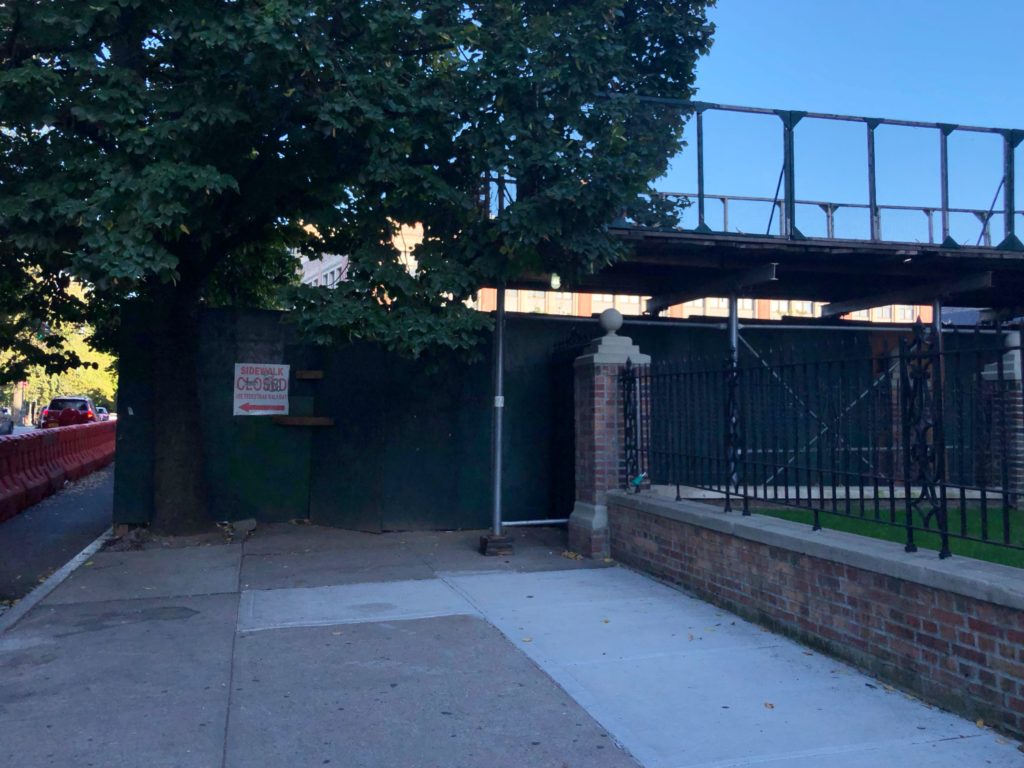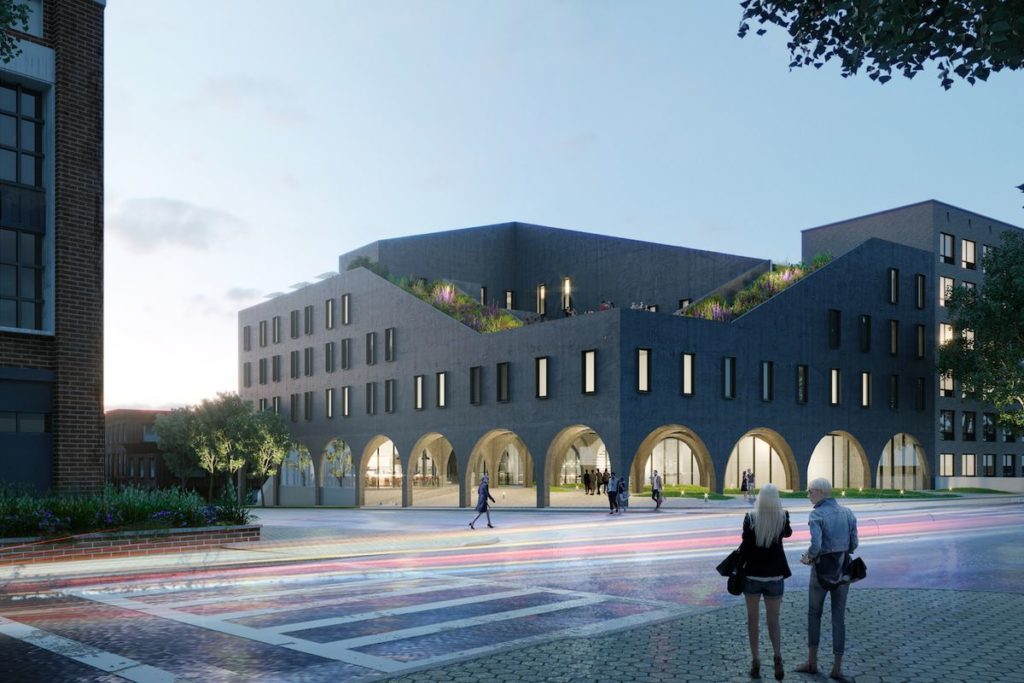Something has erupted at the end of Bedford Avenue, Crown Heights. Beneath the shade of the trees that line Eastern Parkway rises what has become a familiar sight in many parts of Brooklyn: a green fence, the words “post no bills,” small square windows that show the glimpse of a building site inside.

At 1548 Bedford Avenue, what can be seen is the beginnings of a new hotel — The Bedford. The structure is being designed by the architecture company ODA, a New York-based company whose website describes part of its philosophy as “seeking to reorder architectural priorities by putting people first.”
According to the renderings, the hotel is dark, modern, and minimalist — all features that make it stick out in this historic and residential neighborhood in Brooklyn. The low-slung building will occupy the entire block at the junction of Bedford Ave. and Union St., and will certainly symbolize change for the residents of Crown Heights, be it good or bad. Some welcome it; others don’t.

The neighborhood has been challenged by change for many years, and some residents have been fighting to maintain it as it is against gentrifying forces. As a result, there is a lot of apprehension when a something like The Bedford Hotel crops up.
The designers of the hotel have, in turn, offered what they believe to be an olive branch. According to statements made on the ODA website, the hotel will include features inspired by its surroundings. The airy, repeating arches at ground level are said to mirror those of the Grand Army Plaza, and the greenery that lines the slanted rooftop is said to mirror Eastern Parkway. Also, the hotel will include public spaces.
“The Bedford Hotel is conceived as a living and vibrant landscape, a visual extension of the tree-lined Eastern Parkway,” Eran Chen, ODA’s founder, told The Brooklyn Ink. “It combines the tranquility of a court arrangement and a vibrant stacking of public spaces. The goal was to design a public bar and cafe overlooking the vibrant neighborhood that welcomed both guests and visitors. Hospitality is a catalyst for community and connection, which is the basis for all our work.”
Still, some residents aren’t convinced.
Manuela Vilmatelo offers a quick judgement: “It’s bullshit gentrification, what else would you like to talk about?” she says. Her succinctness is perhaps driven by her frustration. Born and raised in Crown Heights, Vilmatelo finds the changes in her neighborhood saddening: “It hurts to see the place I grew up change so much and no, not for the better.”
Other residents expressed their frustration at this property being used for this purpose. Joshua Barnett asks “What will this project give to the neighborhood? Anything? It has to be more than the usual promise of a few low-paying service jobs.” He would prefer affordable housing on the site, or a public library
John Macie agrees. More specifically, he’s noticed a lack of resources for Crown Heights’ youth. “But residents can’t have a recreation center for youth though? Working class neighborhood with thousands of children with nothing to do besides play video games and watch TV.”

Crown Heights residents often mention one constant irritant about their neighborhood — rent is rising at an alarming rate. And they see a distinct pattern: When designer buildings arrive, they draw in higher-income residents. Then, rents increase, and long-term residents become displaced.
Aaron Passell, a professor of urban studies at Barnard, says the residents of Crown Heights are “feeling significant gentrification pressure.” Passell encountered such tensions when he was researching the nature of development in Crown Heights, specifically the controversial Bedford-Union Armory. “Rising rent is putting significant pressure on long-term renters, and rising property prices are putting significant pressure on long-term owners,” he continues. Although displacement is relatively difficult to detect, it is certainly an effect of gentrifying neighborhoods, Passell says: “Relatively low-income, long-term residents are almost certainly correct to fear that they are going to get displaced.”
Displacement is indeed a devastating effect of gentrification. The census data from 2000-2010 shows a loss of nearly 12% of
the black population of Crown Heights. For an area like Crown Heights, with its rich history, diversity, and sense of community, this is particularly noticeable. Among other things, Crown Heights is known for its West Indian heritage, which is celebrated annually at the Labor Day Carnival, an event that attracts an immense crowd. When its people are displaced, the nature of this neighborhood is changed.
Carl Barnett, an artist and designer, chooses to look at the hotel from another angle, however. While he agrees that buildings
such as The Bedford moving to neighborhoods like Crown Heights can cause significant problems — he himself had been pushed out of his neighborhood, Williamsburg, after rent became too high — he thinks that there are positives to
be discussed too.
“It will never be perfect,” he says, “the future seriously needs some inspiration and action.” He argues that what a building like The Bedford Hotel can give to Crown Heights is “inspiration through creativity.” To Barnett, the hotel’s addition of greenery to the neighborhood, the fact that it’s an open building, as well as a place for people to work, should all be considered. “There’s so much there, we just don’t look at it that way.”
As an artist, Barnett sees this development as good thing. He believes that ODA’s intentions are genuine and that what it brings to the neighborhood is creativity and potential for inspiration.
The hotel is slated to be completed by the end of 2020, and perhaps that is when Crown Heights residents will decide if it feels like a welcome addition, and if they feel welcomed in it.

Leave a Reply